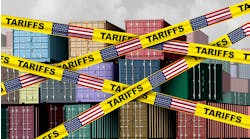Commentary
One of the most confounding things about inflation is that it creates a sense of powerlessness—for consumers, policymakers and business leaders. Although it’s widely assumed that central bankers are the only ones who can bring prices under control, that isn’t the whole story. The manufacturing sector can—and must—help lead the fight against inflation. That might sound surprising. Manufacturing is being buffeted by the same headwinds as other sectors—even more so. When supply chains break down, prices of manufactured goods go up. But the reverse is also true. When industry boosts productivity—when manufacturers unlock ways to make more using less—then prices drop and consumer dollars go further.
In some cases, a lot further.
Breakthroughs in advanced manufacturing, from industrial 3D printers to cloud-networked microfactories, are making it possible to produce what people need, whenever and wherever they need it. Slowly but surely, these digital tools are revolutionizing the physical economy.
As just one example, look at how far we’ve come in producing one of the most common auto parts: electrical connectors. Traditionally, the first step in the production cycle is injection molding, which can take months, costing tens of thousands of dollars. Just to make this worthwhile, most manufacturers require minimum orders on a massive scale. Between steep upfront costs and slow, wasteful overproduction, yesterday’s electrical connectors offer a case study of what’s wrong with our supply chains.
Next-generation manufacturers don’t need to make injection molds. Instead, they have digital tools that can design, make, and move electrical connectors using just a laptop and a Wi-Fi connection. Production costs less, moves faster and works entirely on-demand. As a result, advanced manufacturers are turning out electrical connectors that are more affordable, more available and more sustainable than ever.
Imagine if we took the same approach to consumer goods, medical devices and heavy machinery. While a few forward-looking manufacturers are doing just that, most of the sector is slow to change. By bringing legacy manufacturers into the digital age—slashing production costs and industrial waste—we can empower companies in every sector to quickly drive down prices for consumers and help the global economy stave off recession.
What’s more, digital tools allow manufacturers to share information about inventory, production, logistic, and disruptions. In effect, manufacturers could help companies all over the world navigate volatility together. There’s no question: If transparency had been the norm in the industry before 2020, our supply chains would have been far better able to absorb the shocks and stresses since then—as well as the challenges ahead of us.
This next industrial revolution is within reach—less certain is which countries will be first to seize the opportunity. Here in the U.S., many of our most essential parts and goods are still manufactured far from where they’re needed, using outdated methods and obsolete machinery. Domestic factories are failing to keep up with the demand for semiconductor chips, as well as the core components for construction, agriculture and automobiles.
More than an economic problem, this is a threat to our national security. When it comes to state-of-the-art manufacturing, the U.S. is not only behind but is losing ground to China, Germany, and other nations. It’s telling that out of the 21 most innovative manufacturing sites recently recognized by the World Economic Forum, fewer than a quarter are in the U.S.
To help close that gap, the White House has announced several initiatives. The first, called AM Forward, invites leading manufacturers to train smaller U.S.-based suppliers in new additive manufacturing technologies, and to purchase additively produced parts from them. These are steps in the right direction, but they won’t be enough to transform industry. Many legacy manufacturers have neither the budget nor expertise necessary to modernize.
For this reason, members of both parties in Congress have come together to back the Bipartisan Innovation Act (BIA), legislation that promises to “make generational investments in innovation, domestic manufacturing, and lowering prices through stronger supply chains.” It’s encouraging that one of the Act’s key measures—granting $52 billion in subsidies and an investment tax credit for U.S. chipmakers—has been fast-tracked by the Senate. But lawmakers mustn’t stop there.
It is mission-critical that legislators and manufacturers move decisively to realize the potential of American industry. By any measure—from dollars and cents to gigatons of carbon—America can’t afford to let its manufacturing sector fall further behind. If policymakers invest in the infrastructure and technologies that will power progress over the next century, manufacturers can help turn our inflationary spiral into a virtuous cycle of innovation and competitiveness.
Manufacturers can do a great deal more to strengthen our economy, but they can’t do it alone. The past four industrial revolutions were made possible by government and business working together. So will the next one.
Lou Rassey is CEO of Fast Radius.




